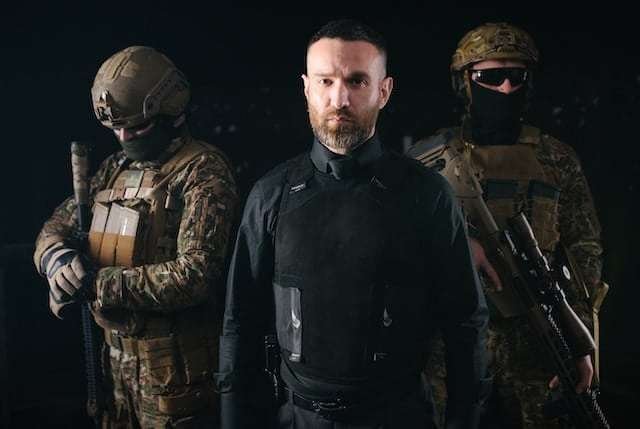Success in practically every aspect of life depends on preparedness. This is especially true during stressful combat situations. Combat scenarios are incredibly stressful for everyone involved, from the typical armed civilian protecting their house and family from an intruder to law enforcement officers dealing with active shooters and armed criminals. Realistic pressure training is the only way to get ready for them because it entails so many changing variables.
As a result, a lot of people, especially professionals, make it a point to frequently train by running drills and participating in different simulations. They hone their marksmanship abilities with a variety of firearms, discover and utilize cover, understand how to recognize dangers and develop their physical stamina and endurance.
But it’s also necessary to work out while wearing body armor to receive the most realistic training experience imaginable. Any law enforcement official or private citizen who takes their protection seriously needs a bulletproof vest in their equipment bag. As a result, BulletProofBoxs will discuss the value of practicing with bulletproof vests in today’s post and how to prepare for high-risk situations.
Knowing How Bulletproof Vests Affect Combat Performance:
First of all, it’s crucial to know how combat performance is impacted by wearing a bulletproof vest. The benefits, such as improved protection, more confidence, and increased survivability, are widely established. Wearing a bulletproof vest, however, might have several disadvantages, most of which are caused by a lack of experience with the vest.
One of the biggest issues with combat performance is the weight of a plate carrier or bulletproof vest. Body armor can be quite heavy with hard armor plate carriers weighing significantly more than soft armor vests, which typically weigh 5 to 6 pounds. When combined with the weight of an operator’s equipment, this added weight can greatly impede and alter their movement.
Moving on, bulletproof vests might limit flexibility, particularly if they are not fitted properly. People who haven’t practiced with a vest on may occasionally find it challenging to shoulder their weapon and shoot accurately. Carrying your rifle with and without wearing a bulletproof vest is an entirely different experience.
Another significant concern is the psychological effects of wearing a bulletproof vest. Operators may become overconfident and experience a false sense of security if it increases their confidence and peace of mind. Nothing is truly bulletproof, ballistic vests are only bullet resistant, and even while wearing armor, acting recklessly in a combat situation can have disastrous effects. The word “bulletproof” is misleading.
Therefore, wearing a bullet proof vest brings a number of new variables to a combat scenario. Training while wearing one can help you become used to these variables and improve your performance in both training and combat.
Challenges of using bulletproof vests during training:
Your bulletproof vests may become damaged if you sweat a lot:
The fact that body armor can get quite soiled and musty due to perspiration is one of the biggest difficulties with wearing it when exercising. It can be a difficult process to properly clean a bulletproof vest, and if you don’t, you might even end up damaging the armor panels or vest.
You sweat a lot when training while wearing a bulletproof vest, especially in hotter, more humid climates. You don’t want your vest to smell bad after doing this because you wear it every day.
Overuse of bulletproof vests during training causes additional wear and tear
The majority of bulletproof vests are made to survive tough use. They can withstand the abrasion of use while on duty because they are composed of sturdy materials. However, the added deterioration from training can hasten the vest’s aging and eventually reduce its efficiency. The armor panels, especially those constructed of ceramic materials can be damaged if the vest is frequently subjected to impact or abrasion during training, which compromises their capacity to stop ballistic threats.
Solutions:
Using a different vest for training is an easy solution to these problems. You might be thinking that this could become too expensive, but remember that while practicing, you don’t require ballistic protection. All you have to do is get used to wearing a vest that restricts your movement and how it feels. You should also become comfortable with your body armor setup so that you can fast access all of your combat gear when needed.
A simple old vest that doesn’t even need to have ballistic panels in it can accomplish all of this. For weighted training, you can use weighted panels like some CrossFit athletes do, or you can use some worn-out old armor.
Conclusion:
As a result, training should resemble real-life combat. Consequently, you must also wear your bulletproof vest while practicing. Body armor can be used in training in a variety of ways to improve fighting effectiveness, but it can also pose certain difficulties. However, these difficulties are manageable, and the overall advantages of training while wearing a bulletproof vest are clear.









